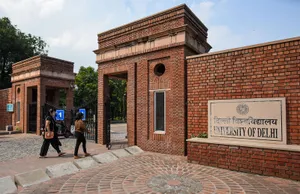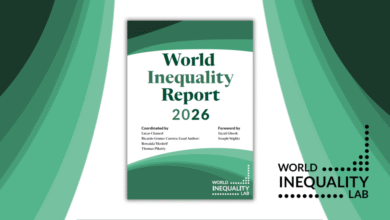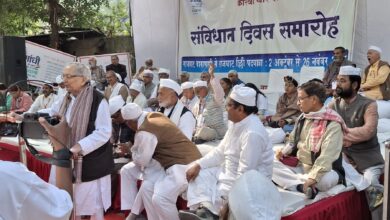“India’s Higher Education Crisis: Why Even Highly Educated Youth Remain Unemployed”
( Media Swaraj Desk )
India’s youth are among the most aspirational in the world. Every year, over four crore students enroll in higher education, but a vast number remain unemployed or underemployed even after earning degrees. This paradox points to a systemic crisis in India’s higher education, which fails to align learning with livelihood.
Key Problems in India’s Higher Education System
1. Mismatch Between Education and Employability
While India produces a large number of graduates annually, only about 45%are considered employable by industry standards (as per India Skills Report 2024). Courses often emphasize rote learning rather than practical skills, critical thinking, or innovation.
In contrast, US and UK universities integrate internships, research projects, and entrepreneurship training into the curriculum. Chinese institutions, especially after recent reforms, focus heavily on applied sciences and vocational alignment with national goals.
2. Outdated and Rigid Curriculum
Most Indian universities follow curricula that lag years behind industry trends. Changes take time to approve due to bureaucratic control by regulatory bodies like UGC and AICTE. New-age disciplines like AI, climate science, data analytics, or renewable energy are still missing in many state universities.
3. Quality Gap Between Institutions
While IITs, IIMs, and a few central universities maintain global standards, thousands of private and state colleges operate with inadequate faculty, poor infrastructure, and limited accountability. These colleges often produce degrees but not knowledge or skills.
China, in contrast, has aggressively invested in “Double First-Class” universities to create world-class institutions. The US system benefits from strong public-private funding, while UK universities combine academic freedom with periodic quality audits.
4. Neglect of Research and Innovation
India spends less than 0.7% of its GDP on R&D, far lower than China (2.4%), USA (3.5%), or UK (1.8%). Indian universities contribute little to global research output. Faculty are often overburdened with teaching and lack time or funding for innovation.
5. Language, Regional and Digital Divide
English remains the dominant medium in higher education, which limits participation for students from rural and vernacular backgrounds. Digital exclusion during the pandemic further exposed inequality—millions of students lacked internet access or digital devices.
6. Poor Industry Linkages and Career Guidance
Most universities lack career cells, industry partnerships, or alumni mentorship programs. Unlike the career services in UK and US universities, Indian students often graduate without internships, exposure, or professional networks.
7. Overemphasis on Degrees, Not Skills
India’s obsession with degrees—especially engineering and MBA—has led to a glut. Yet employers seek communication, creativity, adaptability, and domain expertise, not just certificates.
Conclusion: Time for Bold Reforms
India must recognize that the future of its economy rests on the capabilities of its youth. The New Education Policy (NEP 2020) promises change through multidisciplinary learning, skill integration, and autonomy. But implementation is slow and uneven.
To catch up with global peers like the US, UK, or China, India needs:
• Massive investment in public higher education,
• Strong university-industry linkages,
• Emphasis on research and innovation,
• Local-language content and digital access,
• Outcome-based teaching with skilled faculty.
Without such structural reforms, India risks wasting its demographic dividend.





